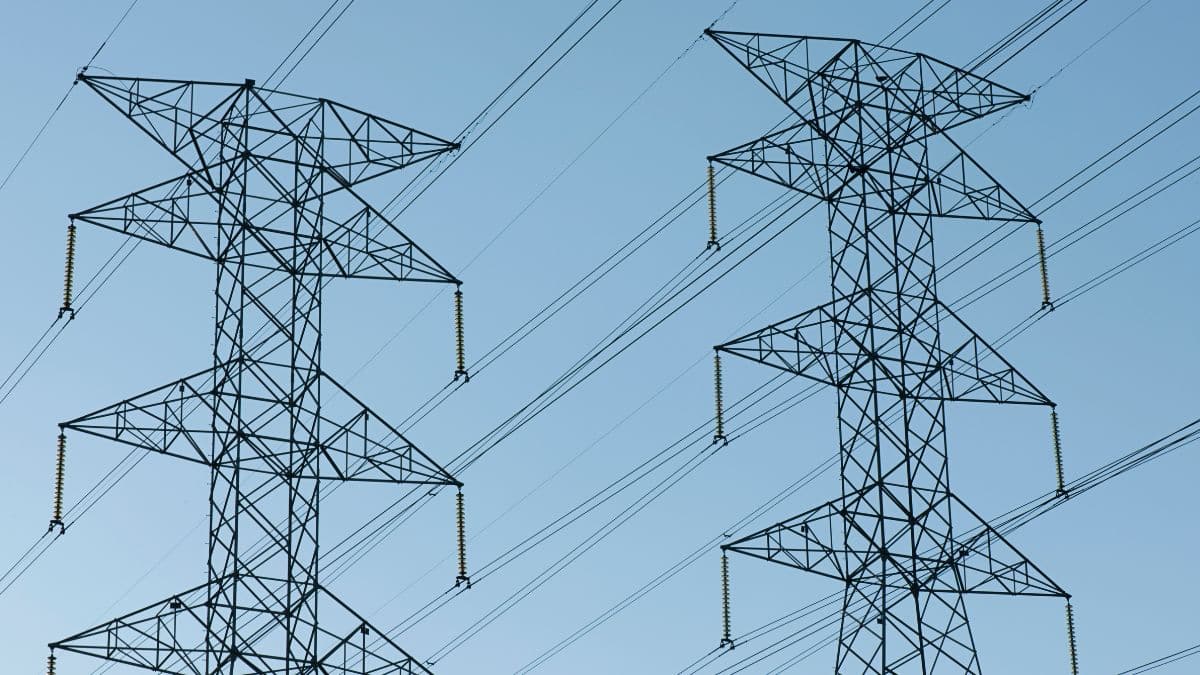The pace of changes in energy law (both Polish and EU) is dynamic. We are facing another amendment to the Energy Law. Consistently, the amendment is guided by the same goal – simplifying the connection process, increasing transparency, and the number of grid connections.
In the justification for the Energy Law amendment (project UC84), the proposer reminds that since the previous major changes – those from the high-profile UC99 project – much has happened in EU energy law. New regulations have come into force that Poland must now implement to keep up with the pace of energy transformation in Europe.
The amendment is also meant to help implement the EU package “Clean Energy for All Europeans,” a set of regulations adopted back in 2018 and 2019 that were intended to facilitate the energy transformation of the entire Union. The Ministry of Climate and Environment indicates that the changes also result from the necessity to implement the National Recovery and Resilience Plan (KPO).
The new solutions are meant to address a range of challenges – from the connection process, through contract conclusion, to the performance of contractual obligations.
New Conceptual Framework
With the amendment, a new conceptual framework will appear in the Energy Law. The legislator plans to introduce definitions of terms such as fixed-term contracts with guaranteed fixed prices, flexible connection agreements, and organized trading platform. New concepts related to REMIT II, the EU rules for preventing manipulation in the energy market, are also envisaged.
Flexible Agreements
One of the most important changes the industry is waiting for is flexible grid connection agreements. They are intended to be a tool in the fight against the too slow development of the grid. How is it supposed to work? If in a place where the grid is inefficient due to capacity constraints, it is not possible to connect a new entity using the existing infrastructure, the operator may conclude a flexible grid connection agreement with the investor. Such an agreement assumes temporary restrictions on energy consumption or input but also specifies the conditions which, when met, will unlock full connection.
Electronic Connection Process
Digitization in the energy sector is not slowing down. Soon, even applications for determining connection conditions to networks with voltage higher than 1 kV will only be submitted electronically – using a qualified signature. However, an exception has been provided for household consumers: they will still be able to use the paper version.

Higher Connection Advances
Of particular importance for RES investors will be the increase in the connection advance payment. The rate per kilowatt of connection capacity will increase from 30 PLN to 60 PLN. Following this, the maximum advance amount will also double – from 3 million PLN to 6 million PLN.
New Application Processing Fees
A new burden for investors is to be the introduction of an “application fee” for determining connection conditions – or rather an “application processing fee.” It is to amount to 1 PLN for each kilowatt of connected capacity, up to a maximum of 100,000 PLN.
Solution for Capacity Blocking – Financial Security
To limit the blocking of connection capacity, the project provides for mandatory financial “security.” It is to be provided by an entity applying for connection to a network with a voltage higher than 1 kV. The amount of this security will depend on the size of the connection capacity. If it does not exceed 100 MW, then the security is to amount to 30 PLN for each kilowatt, and above this threshold – 60 PLN. The upper limit has been set at 12 million PLN.
Declaration Instead of Extract
One of the practical investment facilitations is to be the elimination of the need to attach an extract and outline from the local spatial development plan (MPZP) and to demonstrate legal title to the property where the investment is planned. The amendment assumes that it will be sufficient for the investor to submit an appropriate declaration. Presentation of original documents is to take place only at the operator’s request.
Shorter Validity of Connection Conditions
The legislator intends to limit the blocking of connection capacities by shortening the validity period of connection conditions from two years to one year. The change is intended to ensure that applications are submitted only by entities interested in implementing the investment.
Connection Capacity Auctions
One of the more controversial solutions in the project is the introduction of connection capacity auctions. There are voices that this mechanism may be speculative in nature. In the event of termination of a connection agreement, the operator is to conduct an auction for an agreement concerning the same connection capacity and the same type of installation. The new agreement is to include the same connection principles without the need to use identical technologies.

Cable Pooling – Conflicting Projects Processed at the Same Time
The amendment overturns the existing rules of cable pooling. Connection sharing is to be possible not only for RES installations but for any type of installation. The change in this area can be called a true revolution.
At the same time, the “draft law amending certain acts to deregulate the energy sector” (so-called UDER29) is being processed at the Government Legislation Center (RCL). It narrows cable pooling exclusively to RES installations and energy storage.
An additional impulse for the development of cable pooling is to be the abandonment of preparing a network impact expertise – as long as the modification of connection conditions concerns adding another installation.
Termination of Agreement in Case of Failure to Present Documentation
Investors will have to keep track of the deadline for presenting key documentation. If within 48 months they do not inform the operator about obtaining the required consents and permits necessary for the implementation of the entire installation, and within 36 months – about concluding contracts for the supply of main equipment, the connection agreement will be terminated. This solution is meant to discipline projects whose implementation time is extended.
Removal of the Requirement to Introduce Energy Within 48 Months
The requirement to deliver energy generated in the connected installation to the grid for the first time within a maximum of 48 months is to disappear from the Energy Law.
New Obligations for Network Operators
Operators are to publish more information about the availability of connection capacities. The new information obligation is also to include submitted applications for determining grid connection conditions (for voltage above 1 kV), issued refusals to determine connection conditions, and criteria used to calculate grid capacity. However, a question arises: will merely expanding the scope of published information be enough to increase the transparency of the connection process?
Multiple Agreements for One Consumer
The amendment is to unequivocally determine the possibility of concluding more than one agreement (comprehensive or sales) by the end consumer. The requirement will be to have more than one energy collection point (PPE) or an additional remote reading meter (LZO) in one PPE. Until now, concluding several agreements encountered numerous technical and procedural barriers.
Possibility to Choose an Agreement
Suppliers serving at least 200,000 end consumers will have to present customers with a choice between an agreement with a dynamic price and a fixed-term agreement with a guaranteed fixed price – concluded for at least one year. This solution is intended to make it easier for consumers to make more informed decisions regarding electricity purchases.
New Information When Concluding Agreements
The conditions for selling energy are to be clear to the consumer from the very beginning. When concluding an agreement, the supplier will have to present in an accessible and concise form information about prices and fees, whether the price is fixed or dynamic, as well as contact details (email and phone number). In addition, the supplier is to provide information about payment methods, promotions, and additional services.

Offer Comparator
If the consumer does not conclude a new energy sales agreement, the reserve supplier will inform them about a website with an offer comparator. This obligation will arise when the energy market information operator (OIRE) notifies the supplier that the energy market information system (CSIRE) has not received information about a new agreement concluded by this consumer.
Hedging Strategies
Of particular concern among energy suppliers is the introduction of the obligation for them to prepare so-called “hedging strategies” once every three years. Their purpose is to, among other things, limit the risk of lack of profitability of agreements, ensure liquidity in the day-ahead market and the intraday market, and ensure continuity of supply.
Suspension of Supply or Energy Input
Energy companies will be able to suspend electricity supplies or the introduction of this energy to the grid in the event of incorrect operation of the power guardian. Until now, such action was permissible only in the event of exceeding the contractual power.
Other Changes
The amendment is to adapt the provisions on energy poverty to EU Directive 2019/944. According to the new approach, energy poverty can be discussed when the lack of access to an adequate level of electricity to power basic devices results from high energy prices.
Additionally, the project assumes that entities applying for the connection of biogas plants to the grid will have to commit to seasonal limitation of power introduced to the grid in the season from March to September.
Summary
The UC84 project is an extensive and comprehensive proposal. It contains a number of potentially breakthrough solutions to which the market will have to adapt. The question still remains open: will it prove effective when confronted with practice, network capabilities, and investment reality? The parallel processing of two projects amending the same issues, but in different ways, raises concerns about the consistency and prudence of the introduced solutions. The coming weeks will show whether energy law will undergo drastic changes again.
Bibliography:
- Act of 10 April 1997 (Journal of Laws of 2024, item 266);
- Draft Act amending the Energy Law Act and certain other acts (Government Legislation Center register number: UC84);
- Draft Act amending certain acts to deregulate the energy sector (Government Legislation Center register number: UDER29);
- Directive (EU) 2019/944 of the European Parliament and of the Council of 5 June 2019 on common rules for the internal market for electricity and amending Directive 2012/27/EU (OJ L 158, 14.6.2019, p. 125);
- Directive (EU) 2024/1711 of the European Parliament and of the Council of 13 June 2024 amending Directives (EU) 2018/2001 and (EU) 2019/944 as regards improving the structure of the Union electricity market (OJ L 2024, p. 1711);
- Regulation (EU) No 1227/2011 of the European Parliament and of the Council of 25 October 2011 on wholesale energy market integrity and transparency (OJ L 326, 8.12.2011, p. 1).

Jan Tyczyński
Junior Associate at MGS LAW Mądry, Sznycer, Sambożuk Law Firm Alumni of the Energy Leaders Academy 2024. Editor of the MGS LAW legal newsletter distinguished with the quality mark of the Energy Law Lawyers Association. Between 2022-2024, he provided legal services to the headquarters of Energa-Operator S.A. Specializes in energy law, with particular emphasis on renewable energy sources, prosumer activities, and the functioning of the electricity distribution system - including unbundling of energy companies. Advises clients on compliance and implementation of modern legal solutions. Also has experience in comprehensive legal services for business entities. Combines legal knowledge with interests in international relations and economics. He is committed to providing clients with practical and effective legal solutions adapted to the dynamically changing market and regulatory environment.
